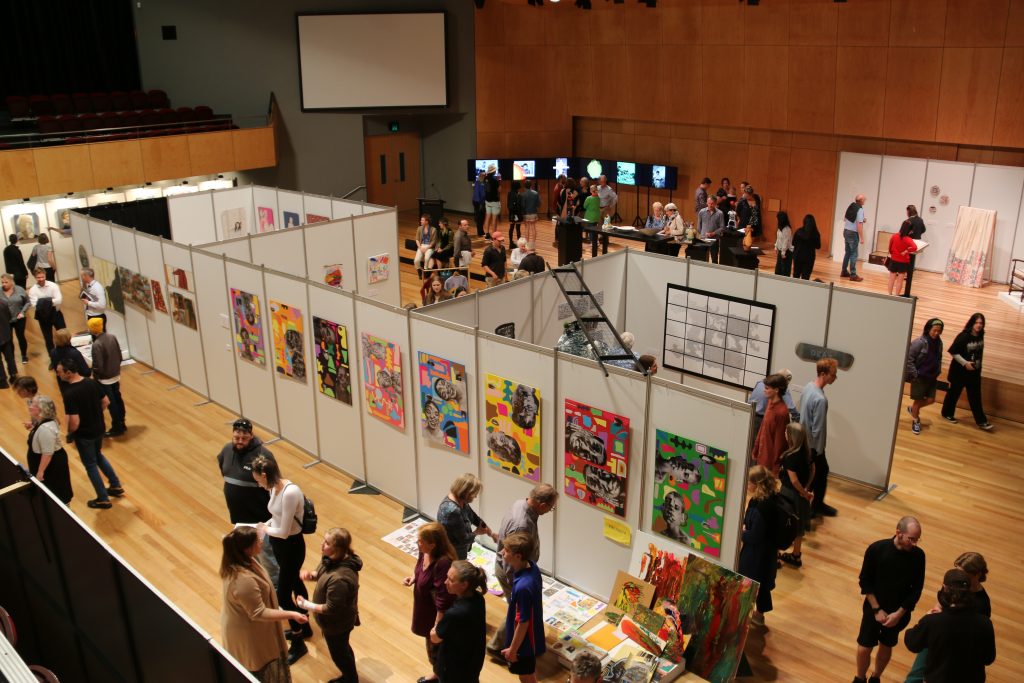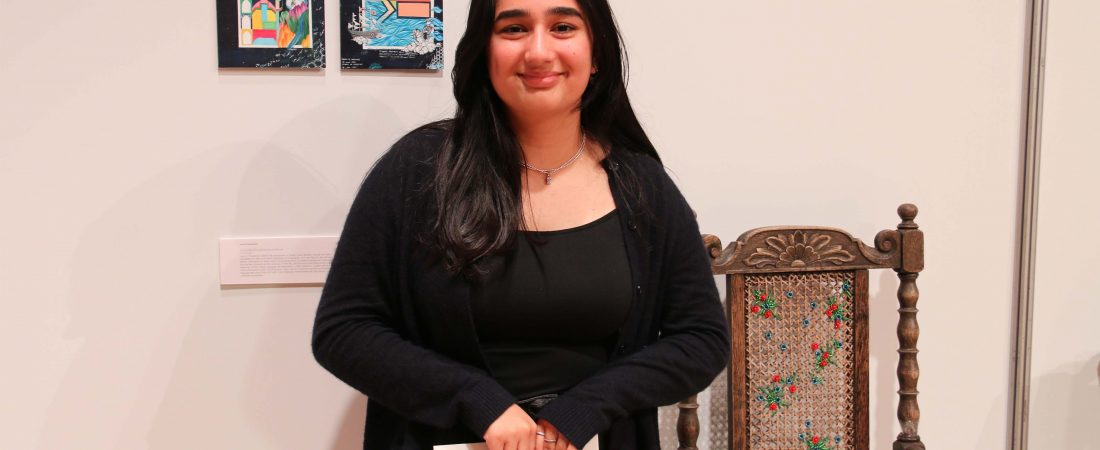TCE and IB Art Exhibition
Posted on November 5, 2021
At last night’s opening of our TCE & IB Art Exhibition, the Visual Arts Prize was awarded to Alia Haider (Year 12 Higher Level IB) for her impressive sculptures.
Our exhibition brings together work by students who have been studying 3 different courses – art production, studio practice and The International Baccalaureate.
The Exhibition is open for the public to view in The Farrall Centre, Monday – Friday, 9am to 3.30pm until Friday 19 November. We encourage you to go and take a look at some of the works that have been created by our talented Art students throughout the year.

Below is a snippet of Alia’s curatorial statement:
“A commercial company enslaved a nation comprising two hundred people”
– Leo Tolstoy
My exhibition explores the transformation, suppression and loss of South Asian culture by Western dominance. From generational oppression to personal migration, this body of work attempts to depict the irreversible and deeply ingrained detriments of British Colonialism in the Indian Subcontinent. The true melancholy of colonisation resides not in the physical oppression, but in the gradual unfamiliarity of one’s own culture. The notion that your culture is no longer recognisable, no longer yours is a haunting prospect – one which I attempt to navigate and portray in this exhibition. My works incorporate cultural objects and patterns, with their interactions mimicking those interactions between the West and East. The use of Western objects such as cans and chairs aim to acknowledge the complex and antagonised relationship between the West and the East. For I, myself, am a product of this relationship.
The exhibition is divided into two distinct sections, which mimic my own artistic and thematic development. The pieces Lost in Translation, The Dark Jester, Oriental Aspirations and En mass are more expressive, vibrant and busy – as they attempt to explore the complex relationship between the coloniser and the colonised. These works are mainly 2-dimensional, with various bright colours…In the Subcontinent, colonisation was such that the colonisers both hated, envied and adorned their captures. Behind the curses lay a deep yearn for the luxuries of the coloniser’s world. The depiction of traditional patterns on industrialised cans attempts to look at the hypocrisy of modern-day cultural appropriation. The juxtaposition of the European renaissance style and brown hand in The Dark Jester attempts to reconcile with what the colonisers has deemed “perfect”. The “white man” is seen as the ideal, with the “brown man” powerless and envious, degrading one’s own culture for hopes of one day becoming powerful.
